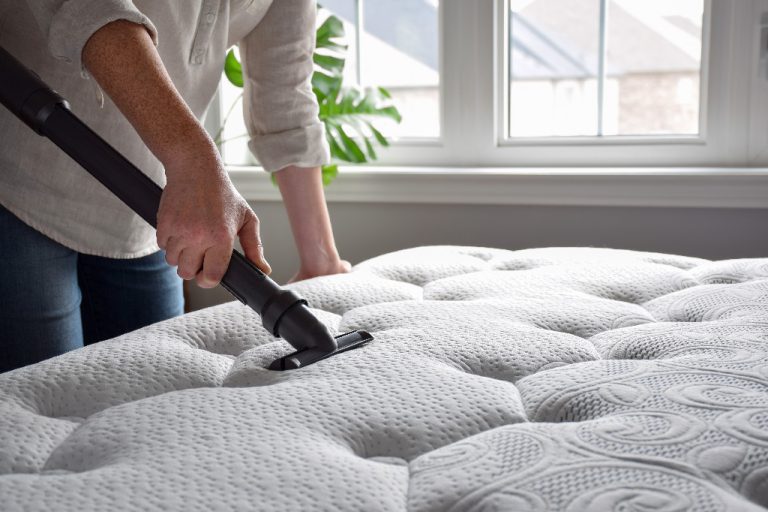
A mattress is usually one of the most expensive items for a new home so you’d want to make sure it lasts as long as possible – and that means learning how to clean and properly care for a mattress. Dust mites, dirt, sweat, dead skin and other debris will inevitably get into your mattress over time, even if you use a mattress protector, thus it is best to have your mattress cleaned regularly to extend the lifespan of your bed – especially if you suffer from allergies or have pets too. In addition, cleaning your mattress is an important part of maintaining a healthy sleep environment.
The good news is, cleaning a mattress is not as complexed as you might think. Discover the five simple steps below that will help you keep your mattress clean and ready for years of good night’s sleep.
Disinfecting and Cleaning Your Mattress
1. Put together mattress cleaning supplies and tools
To deep clean a mattress, you’ll need a few household items to help you with it.
- An enzyme cleaner or dish soap
- A vacuum with an upholstery attachment
- Baking soda
- Clean white cloths
- Cold water
2. Remove bedding
Strip off all sheets, pillowcases, and mattress covers. Wash them according to the care instructions. Washing bedding in hot water will help to get rid of dust mites but please take note of the washing instructions as some materials may be more delicate. Depending on the type of pillows, you may be able to wash them as well. For more information on caring for pillows, please read here.
3. Vacuum the mattress
Use a vacuum cleaner with an upholstery attachment on low suction to thoroughly vacuum the entire surface of the mattress. Pay special attention to seams, edges, and crevices where dust, dirt, and allergens may accumulate.
4. Spot clean stains:
If there are any visible stains such as blood or sweat on the mattress, spot clean them. Avoid using excessive water, as mattresses can take a long time to dry and too much water can damage certain construction materials. Proceed with caution especially if you are using the tools to clean for the first time and test the cleaning solution in an inconspicuous area first.
Spray the enzyme cleaner onto a clean cloth and blot the stained area with the cloth. Thereafter, apply some cold water to a different clean cloth and continue blotting gently until the stain comes off. Take note to use as little product and moisture as possible. Alternatively, you can make your own stain removal solution by mixing dish soap with water. With the foam created, use a cloth to pick up the foam and apply it to the stain. Avoid using a stiff brush to scrub the fabric.
5. Deodorize the mattress
To eliminate odours, sprinkle baking soda over the entire mattress surface. Let the baking soda sit for at least 15 minutes, or longer if possible. Baking soda will break down acid and absorb any remaining moisture or odour. After allowing the baking soda to sit, vacuum the mattress once more to remove the baking soda along with any trapped odours. You can also prop the mattress up in a well-ventilated area to allow air to circulate. Fresh air can help remove any lingering odours
How often to clean your mattress?
After learning how to clean a mattress, it’s time to protect it. Once the mattress is completely dry, cover your fresh mattress with a mattress protector. This will make cleaning easier in the future and protect your bed from spills and dirt. Make it a habit to vacuum your mattress at least twice a year and spot clean any stains on a regular basis to keep it in good condition.
Check Your Mattress Manufacturer's Cleaning Guidelines
Remember to check your mattress manufacturer’s guidelines for cleaning, as some mattresses may have specific care instructions to follow. Always be cautious with the amount of moisture you use, as excessive moisture can lead to mould and mildew growth.
Extend the Lifespan of Your Mattress By Cleaning Regularly
In conclusion, cleaning a mattress regularly can definitely help to extend the lifespan of your bed and make it comfortable to sleep on for years. However, if you’ve had your bed for a long time and it is no longer providing sufficient support and comfort, do consider investing in a new mattress. Read this article to discover the common signs to look out for and when is the right time to replace your mattress.



